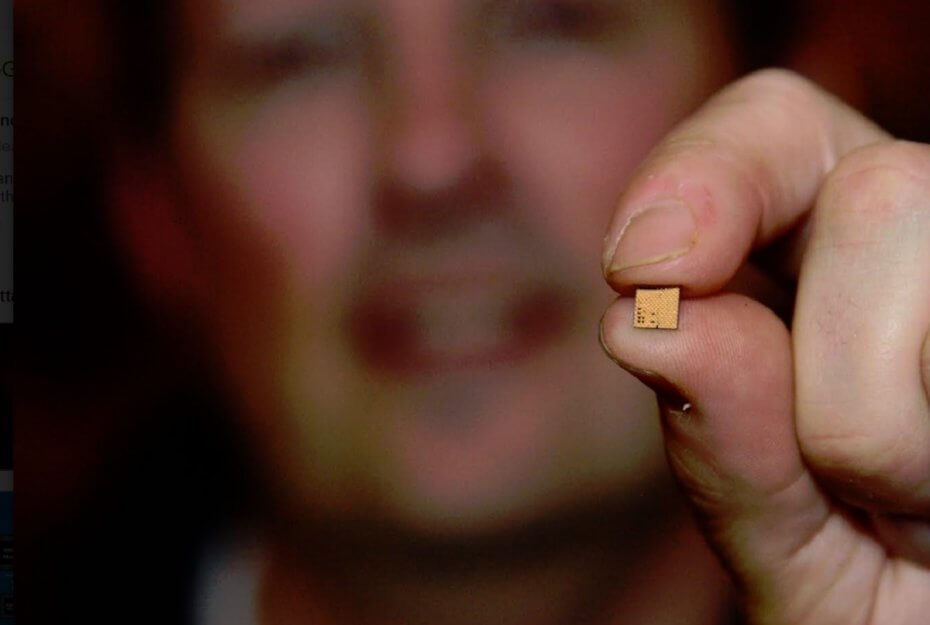
The Internet of Things is expected to grow quickly to tens of billions of connected devices, from smart refrigerators to smart showers to smart cruise ships.
But at some point, the wireless data networks won’t be able to handle all that traffic from the connected devices. That’s why tech companies want to upgrade to 5G wireless, which is a fifth-generation mobile network that can transmit data at gigabits per second, compared to the single-digit megabits per second that we get today on our smartphones.
And Intel wants to be a big player in this 5G business. Rob Topol is general manager of Intel’s 5G business and technology. I talked to him at CES 2017, where Intel introduced its first 5G modem chip. This kind of chip will enable tons of connected devices — connected cars, drones, robots, collaborative augmented reality glasses — to transfer data at fast speeds in the future.
Topol and I talked about whether 5G is really going to speed things up, or if the added traffic will just bog our networks down. Here’s an edited transcript of our interview.

Image Credit: Dean Takahashi
VB: How long have you been in this particular position?
Rob Topol: I’ve been in this position just the past couple of years. I’ve spent 17 years at Intel. I started in manufacturing, moved through SOC design, up into wireless the past several years. As we’ve started to form our 5G business activities—this is a fairly new position, managing 5G business and technology. My role is to work on the device side to ensure any of the prototypes, test beds, use case work we do is enabling all the verticals we have planned for 5G.
This isn’t just about a handset. In fact, we frequently say that 5G is the post-smartphone era. It’ll be more about the other businesses than it’s about handsets. Handsets will just be a part of it. There will be drones, connected homes, collaborative AR, other use cases that not only need but will benefit from 5G. My job is to make sure the prototypes are there, that we have the right test beds and partnerships in place to build this.
VB: You had an announcement a couple of days ago.
Topol: We had essentially two related to 5G. For the past year, we’ve built mobile trial platforms. We built 5G prototypes that we demonstrated a year ago at Mobile World Congress. You can start to utilize three, four, five gigabits per second in data rate and test different use cases with that.
What we announced here at CES, one thing is the Intel Go platform, an end-to-end solution for working with automotive OEMs on autonomous driving. We put a 5G FPGA-based modem in that platform that can now test any sort of—wherever there’s 5G spectrum available, you can test those use cases using upwards of seven gigabits per second. Whether it’s HD map downloads or over-the-air updates to the car or media content, whatever use cases, it’s ready next month for use in cars to develop that.
The second announcement was our first-generation global 5G modem. Taking what we’ve building in FPGA prototypes, putting it into an ASIC with a transceiver and a base band modem. What I was showing just a minute ago, this is the transceiver we announced. This supports both sub-six-Ghz and millimeter-wave frequencies. The transceiver is ready now, as well as our millimeter-wave antenna arrays.

Image Credit: Intel
The base band itself we’ll start to sample in the first half of this year. The reason it’s a few months behind is because cellular is based on standards. We want to make sure we incorporate as much of the next-generation new radio technologies into that solution. Think of it as being in the oven, just waiting for the last set of features to get in there for release.
You’ll see a full chip kit solution by Intel in the second half of this year. With the car, you can put something in the trunk now, but then you can put something into a more mobile form factor. If you want to test it in a smaller mobile device, in an airborne drone, in a tetherless headset for AR and VR, it opens up all of those opportunities.
VB: 5G sounds very promising. I remember so many other transitions, though. 4G was supposed to bring great things, but Verizon charged us very high rates for data, and then we had to switch to T-Mobile, which had poor voice connections. It seems like there are all these tradeoffs when a new wireless data tech is introduced. Everybody soaks up the capacity and it’s not enough again.
Topol: First of all, you hear a lot about 5G from a cellular standpoint, as cellular technology. But 5G will also see advancements in Wi-Fi and Wi-gig. If…

